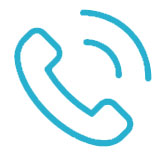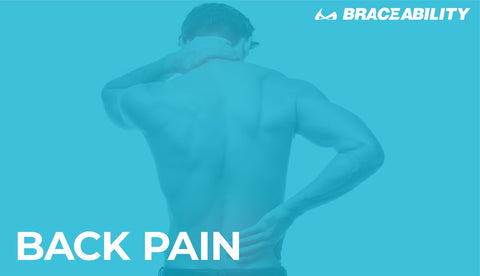Commitment to Comfort Spotlight: Sciatica
Find Lasting Relief for Sciatica Pain with Comfortable Support
Sciatica can be a real pain—literally. If you’ve ever felt a sharp, burning sensation radiating from your lower back down through your leg, you know how disruptive it can be to everyday life. Whether you're gardening, exercising, or simply trying to get through the day, sciatica pain can make even the simplest tasks feel overwhelming.
Understanding Sciatica - Four, four, and four!
Sciatica is when the longest nerve in the body, the sciatic nerve, is compressed or irritated. This can be due to a herniated disc, spinal stenosis, bone spurs, or even spending too long sitting down. The sciatic nerve runs from the lower back down through the hips, buttocks, and down each leg, so the pain is typically felt radiating along this path.
Four Common Symptoms of Sciatica
Sciatica symptoms can vary in intensity and location, but the most common signs include:
-
Sharp or burning pain in the lower back, buttocks, and down the leg.
-
Numbness or tingling in the affected leg or foot.
-
Weakness in the leg, making it difficult to walk or stand for long periods.
-
Pain that worsens with prolonged sitting or sudden movements like coughing or sneezing.

What Causes Sciatica? Four Common Causes
Several conditions can contribute to sciatic nerve compression, including:
-
Herniated Discs: When the soft inner portion of a spinal disc pushes through the outer layer, it can press on the sciatic nerve.
-
Spinal Stenosis: The narrowing of the spinal canal can create pressure on nerves, including the sciatic nerve.
-
Spondylolisthesis: When one vertebra slips forward over another, it can compress the nerve.
-
Piriformis Syndrome: The piriformis muscle, located in the buttocks, can spasm and irritate the sciatic nerve.
Four Sciatica Treatment & Management Strategies
Managing sciatica effectively requires a combination of self-care, professional treatment, and lifestyle adjustments. Here are some proven strategies to help relieve sciatic pain:
1. Maintain Good Posture
Slouching or sitting for long periods can worsen sciatica symptoms. To alleviate pressure on your spine:
-
Sit with your feet flat on the floor and your back supported.
-
Use a lumbar cushion if necessary.
-
Stand up and stretch frequently, especially if you have a sedentary job.
2. Stay Active
While it may be tempting to rest completely, too much inactivity can actually make sciatica worse. Engaging in low-impact exercises, such as:
-
Walking can improve circulation and reduce inflammation.
-
Stretching can relieve nerve pressure, especially poses like the knee-to-chest stretch.
-
Swimming is gentle on the back while strengthening core muscles for better support.
3. Use Hot and Cold Therapy
Alternating between ice and heat can provide significant pain relief.
-
Cold therapy* helps reduce inflammation and numb sharp pain.
-
Heat therapy relaxes tense muscles and increases blood flow for healing.
-
Apply for 15-20 minutes at a time, several times a day.
* BraceAbility offers a hot and cold gel that works well both with braces and on its own!
4. Wear a Supportive Back Brace
A well-designed back brace can provide targeted relief by reducing spinal pressure and stabilizing the lower back.
Product Spotlight: Herniated Disc Back Brace
For those experiencing sciatica due to a herniated disc or spinal instability, the Herniated Disc Back Brace can be a game-changer.
Why This Brace Stands Out:
Maximum Support with Front & Back Panels
This brace supplies both support and decompression, releasing pressure on the spine and the sciatic nerve. In relieving some of the pressure into the abdomen, it holds one in a more natural position to relieve pressure on the lower back.
Breathable & Comfortable Fit
Made of a soft, light, and durable material, the brace is designed to be worn day and night. The air-permeable fabric is comfortable without causing overheating or irritation, thus it can be worn over or under clothing.
Easy to Adjust & Wear
The secure fasteners and hand loops make it easy to put on, even for those with limited mobility or arthritis. Plus, the elastic double-pull tabs allow for a customized level of compression and support.
How This Brace Helps with Sciatica Relief
Wearing the Herniated Disc Back Brace can be an effective tool in managing sciatica pain. By stabilizing the lumbar region and improving posture, it:
-
Reduces nerve compression, alleviating pain and discomfort.
-
Promotes proper spinal alignment, which can prevent future flare-ups.
-
Provides gentle compression, which stimulates circulation and healing.
Take Control of Your Comfort
Sciatica doesn't have to rule your life. With the help of movement, good posture, hot/cold therapy, and proper support, you can find relief and continue to be active. The Herniated Disc Back Brace is a reliable, doctor-recommended solution designed to enable you to move with confidence and get back to doing what you love.











